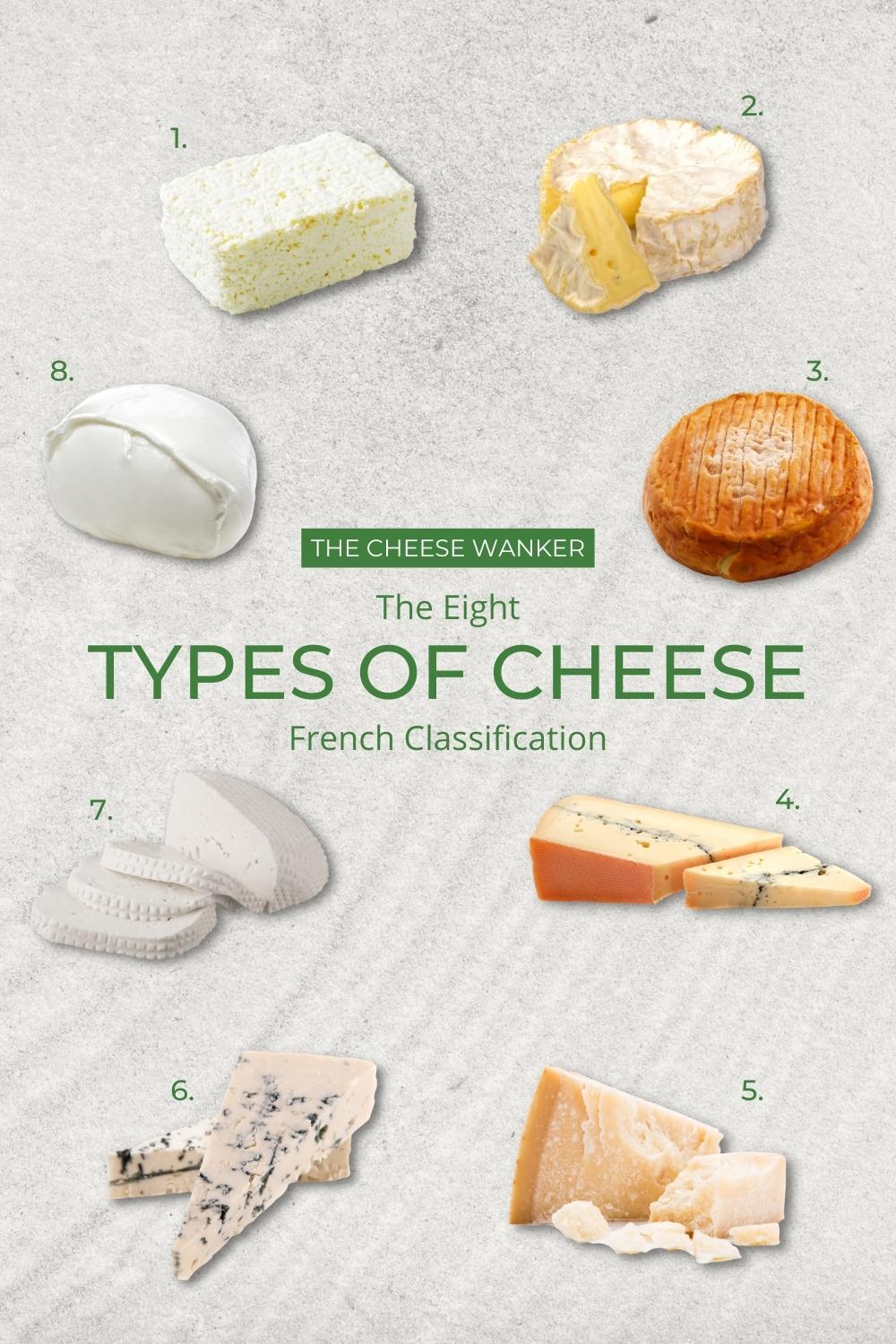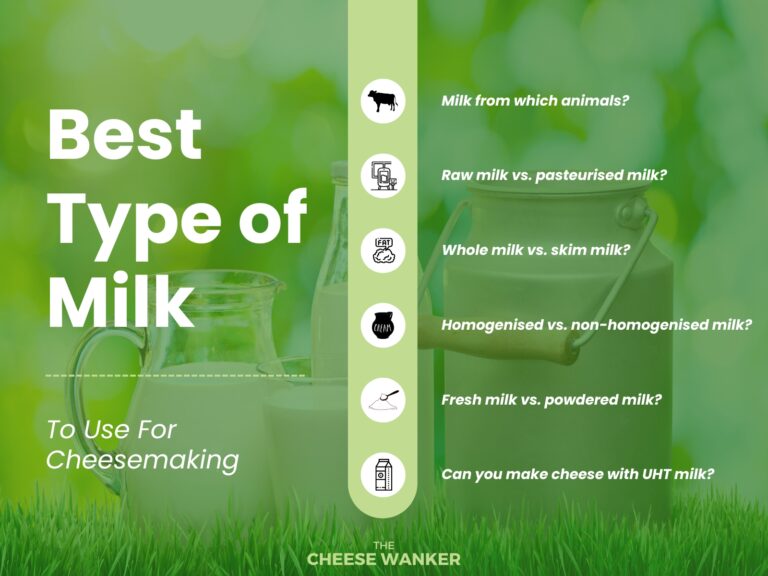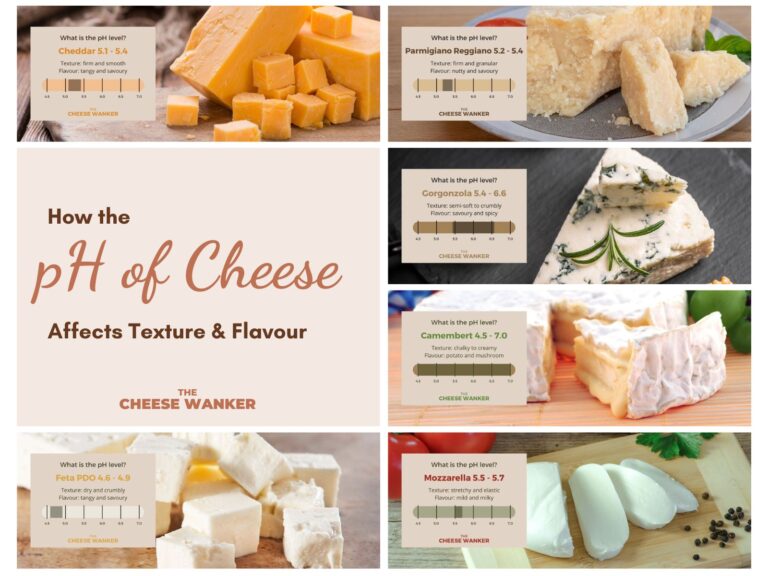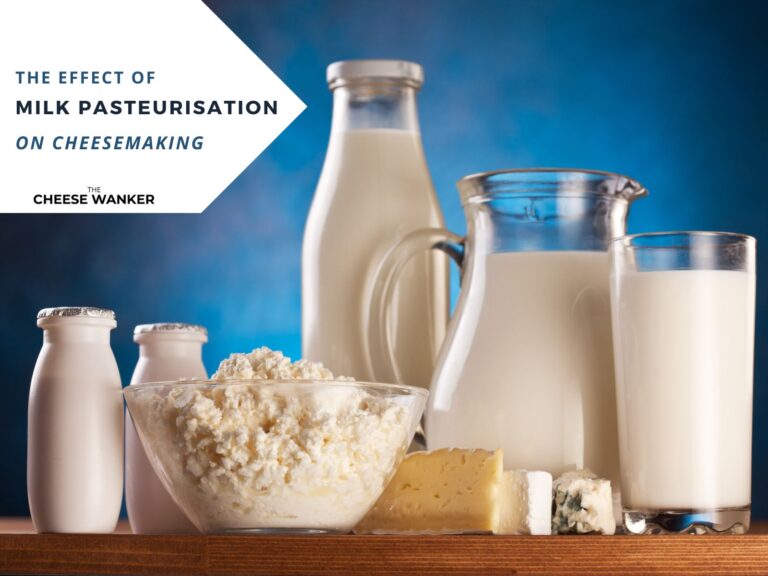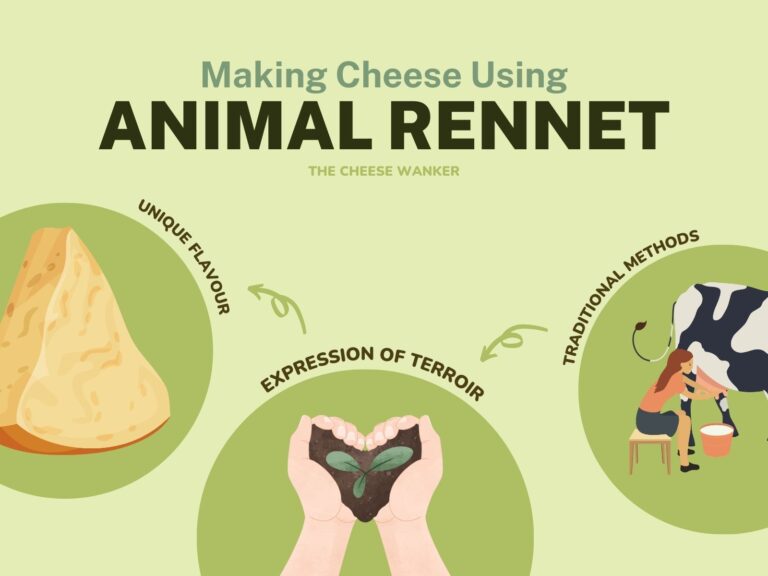There are thousands of different cheeses that are made around the world. But, did you know that we can actually classify them all under 8 different types of cheese? Read on to learn about what those are. And we will also give you some great examples of cheeses that fall under each type.
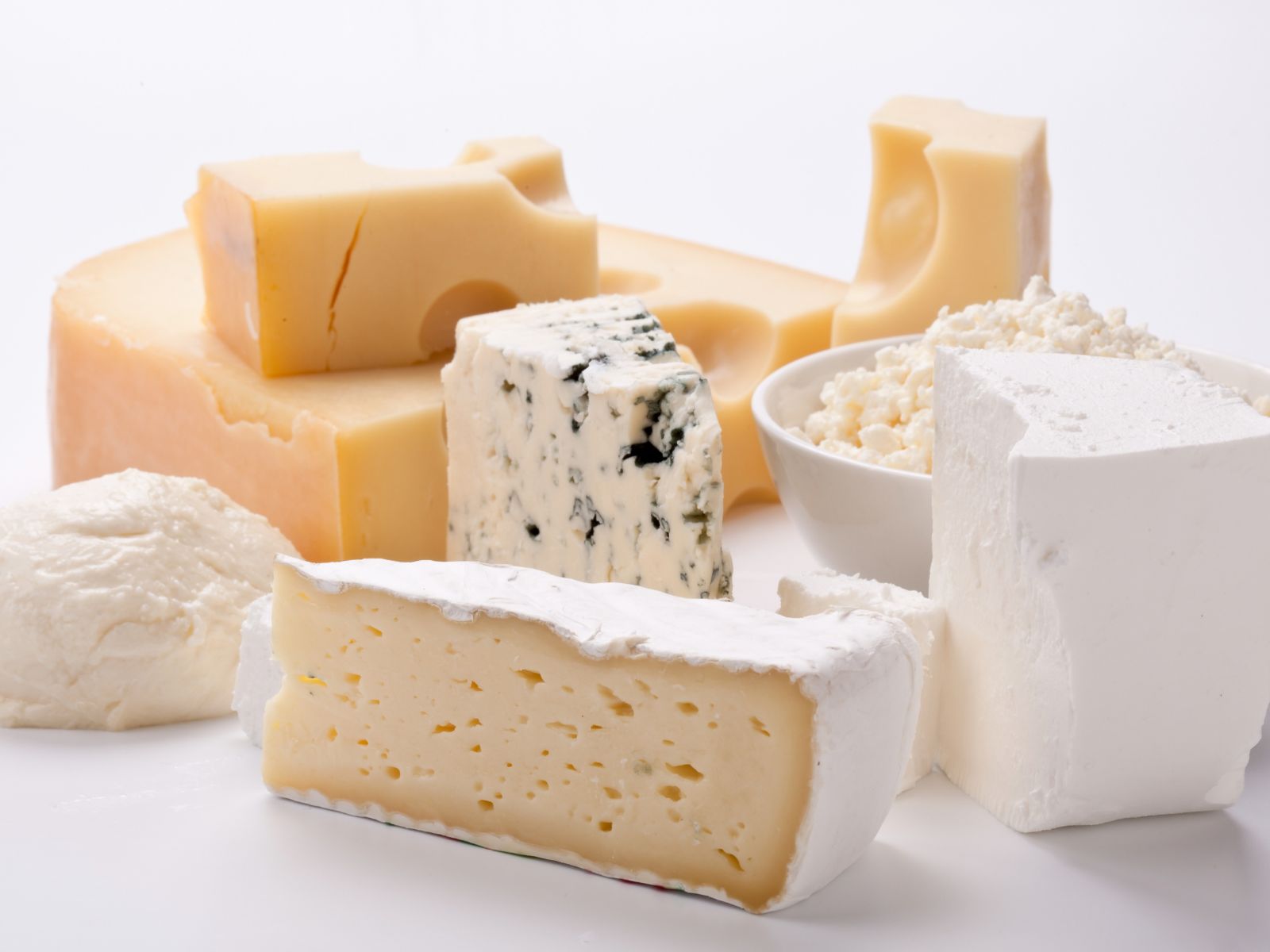
SEE ALSO: The 4 simple ingredients you need to make cheese →
The French classification
There are many school of thoughts when it comes to how we should distinguish between the various types of cheese. For the purpose of this article, I will be using the classic French method of classification.
As you will find out, it has nothing to do with the milk used. Instead, it focuses on the cheesemaking process. Within each cheese type, the texture, aroma and flavour can vary tremendously. So, our descriptions are there only as a rough guide.
Fresh cheese
e.g. Boursin, Fresh Chèvre, Fromage Blanc, Queso Fresco, Paneer, Cottage Cheese
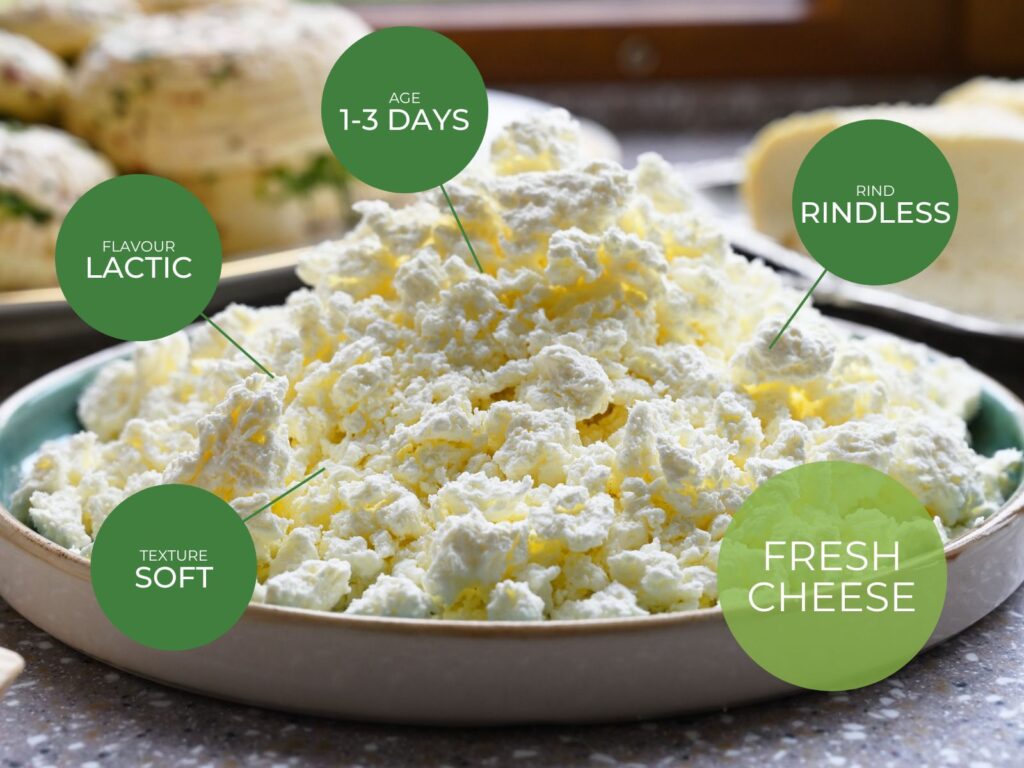
Let’s start with the youngest of all types of cheeses. Indeed, fresh cheeses are only a few days old and are completely rindless.
Overall, they tend to have a fresh aroma with subtle lactic and creamy flavours. Actually, fresh cheeses are often mixed with spices or herbs to accentuate their flavour.
Soft white mould cheese
e.g. Brie de Meaux, Camembert, Valençay, Brillat-Savarin, Chaource
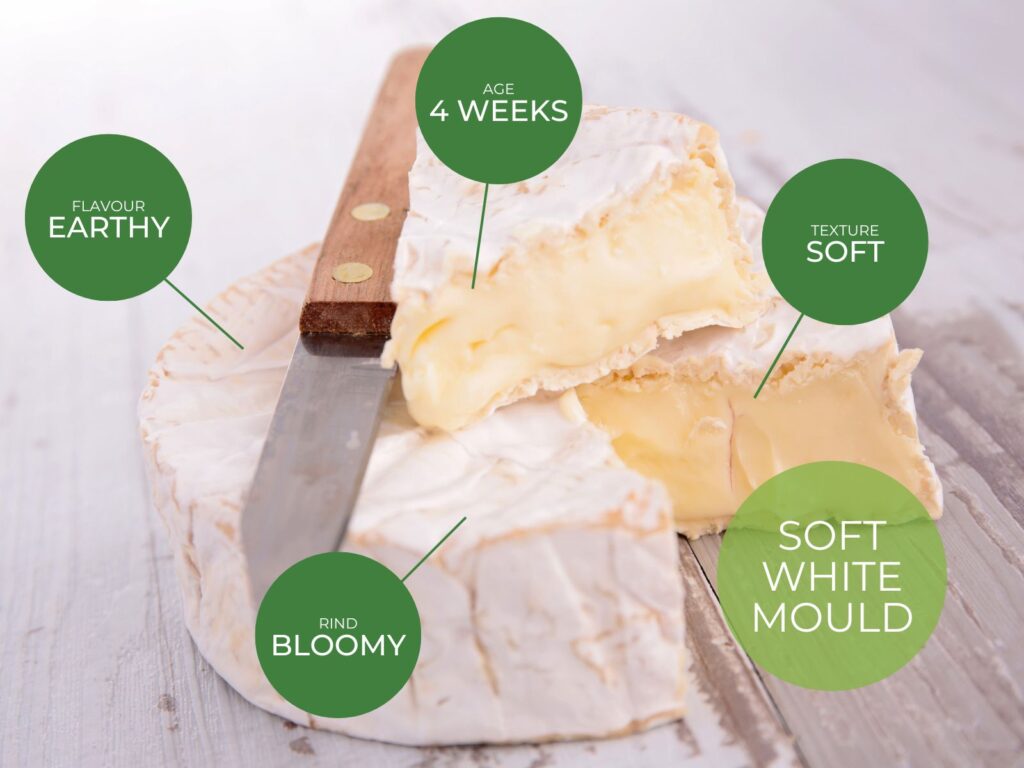
Next we find one of the most popular types of cheese, soft matured cheeses with a mould rind. These soft cheeses develop a white bloomy rind during maturation which can last from 3 to 6 weeks.
Some characteristic aromas are mushroom, yeast and forest floor. On the palate, some of the notes you might expect include hazelnuts, butter, cream and mushroom.
Soft washed rind cheese
e.g. Epoisses de Bourgogne, Langres, Livarot, Maroilles, Munster, Mont d’Or
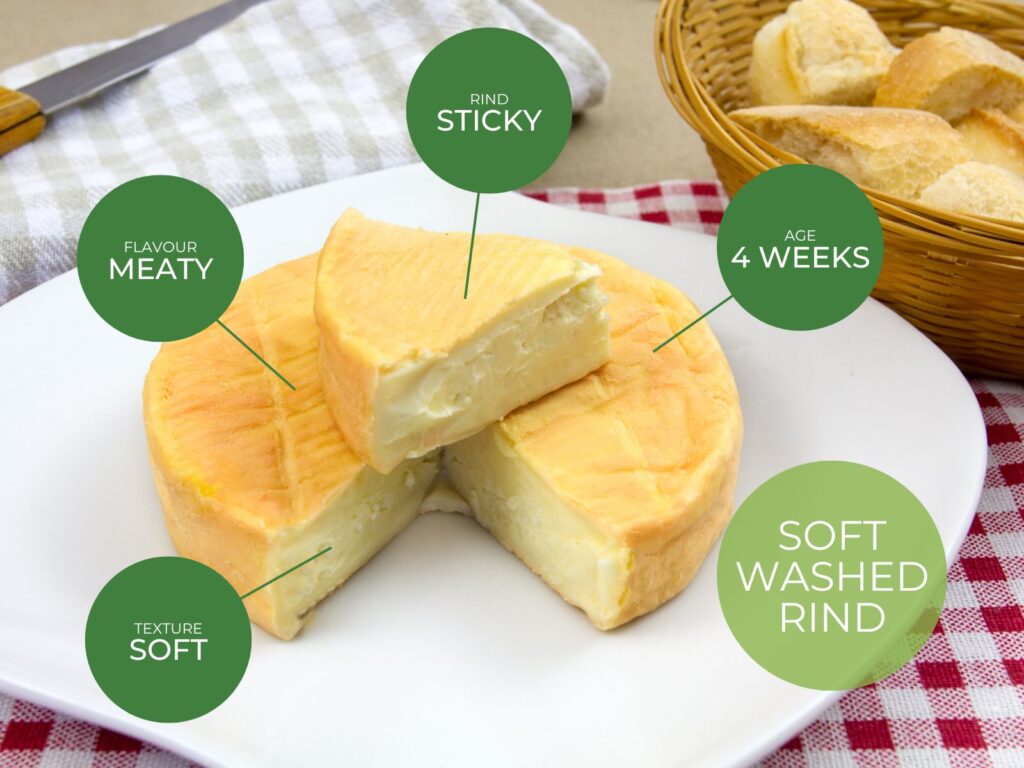
Now this is easily the smelliest type of cheese. Cheeses in this category are often washed with a salt or alcoholic solution while they mature (up to several months).
While their aroma tends to be very strong and yeasty, the flavour is often more subtle and delicate. Expect fruity, brothy and meaty notes with most soft, washed rind cheeses.
Pressed uncooked cheese
e.g. Morbier, Reblochon, Raclette, Fontina, Cheddar, Gouda, Manchego
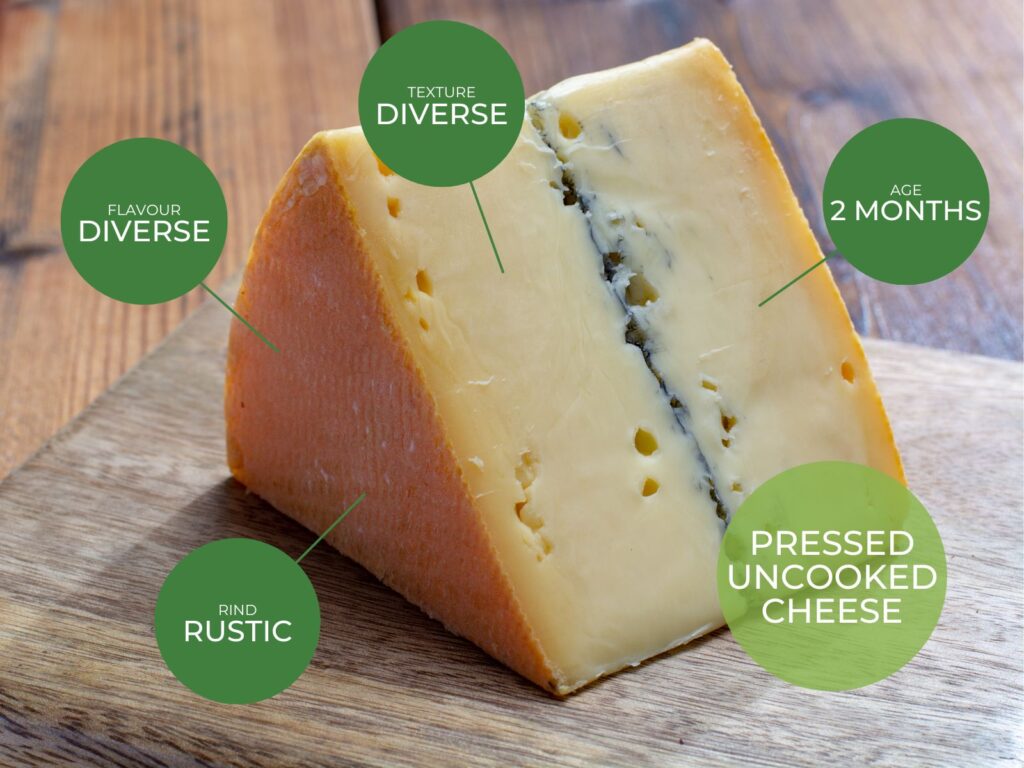
This might just be the most diverse category yet. Actually, the one thing that unites them is that the makers mechanically press their uncooked cheese to expel moisture.
Maturation can last anything from 2 months to more than one year. As a result, the cheese develops a semi-hard to hard texture.
Pressed cooked cheese
e.g. Beaufort, Comté, Emmentaler, Gruyère, Pecorino, Parmigiano Reggiano
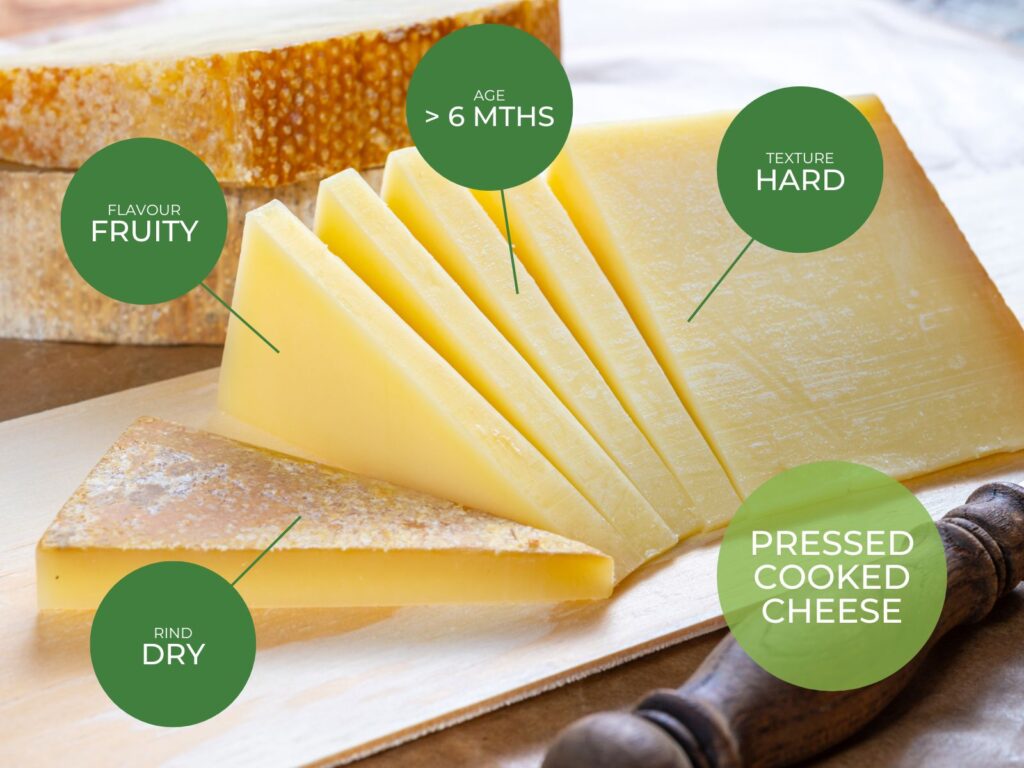
Pressed cooked cheeses are actually very similar to the category we’ve just covered. And, yes, you’ve guessed it! The only difference is that their curds are heated/cooked during production.
As a result, these cheeses tend to have a much firmer texture. Once again, the aroma and flavour can be quite diverse within the class but often include fruity and lactic notes.
Blue cheese
e.g. Roquefort, Bleu d’Auvergne, Stilton, Gorgonzola, Persillé de Chèvre
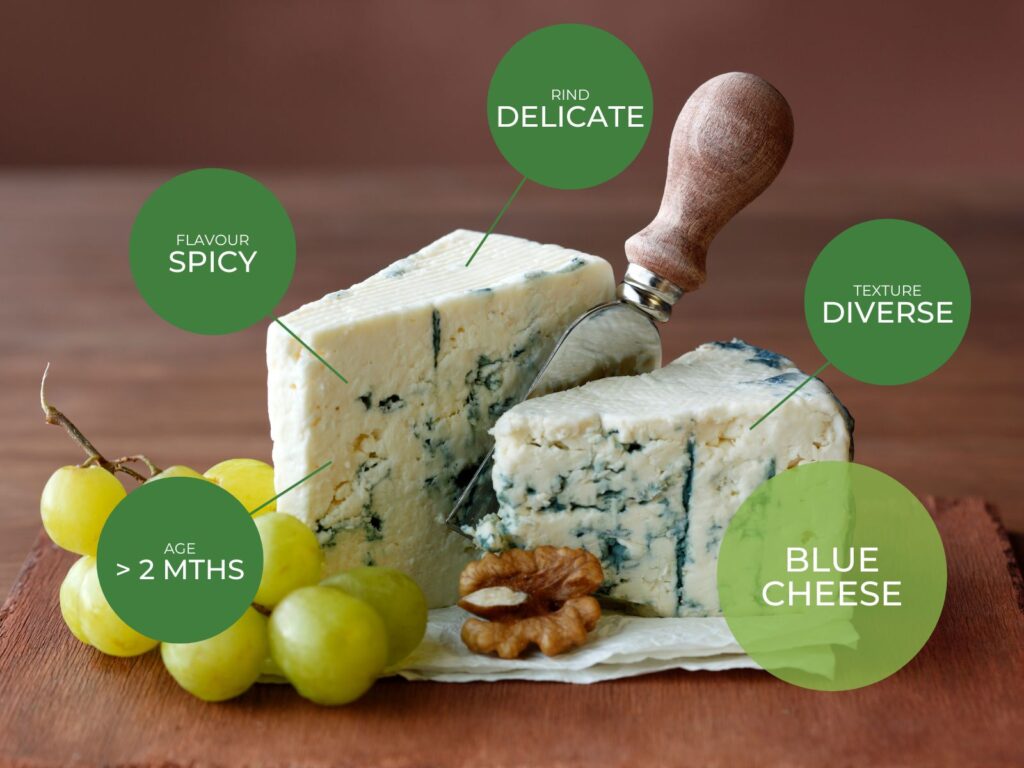
The blue in blue cheese typically comes from a mould called Penicillium roqueforti. The mould can manifest as veins, pockets and even an external rind. Maturation can last up to 8 months.
Blue cheeses can have a range of textures from semi-soft to hard and their flavour intensity can vary from mild (Gorgonzola Dolce) to spicy (Roquefort).
Whey cheese
e.g. Ricotta, Brocciu, Brousse du Rove, Brunost, Urdă, Myzithra
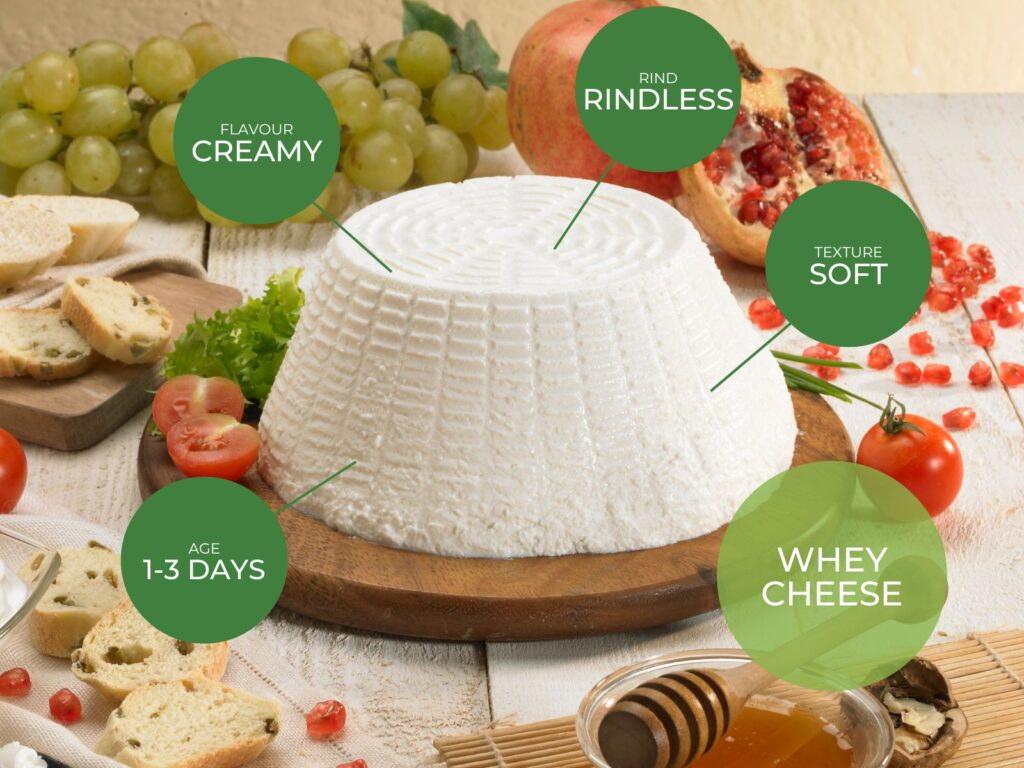
While every cheese we’ve discussed so far is made using milk solids, our second last cheese type is actually made with whey. Whey is the liquid part of milk that is often removed during cheesemaking.
Cheeses made from whey are typically consumed fresh and are often added to both sweet and savoury dishes.
Pasta Filata cheese
e.g. Mozzarella, Fior di Latte, Provolone, Caciocavallo, Oaxaca, Dil Peyniri
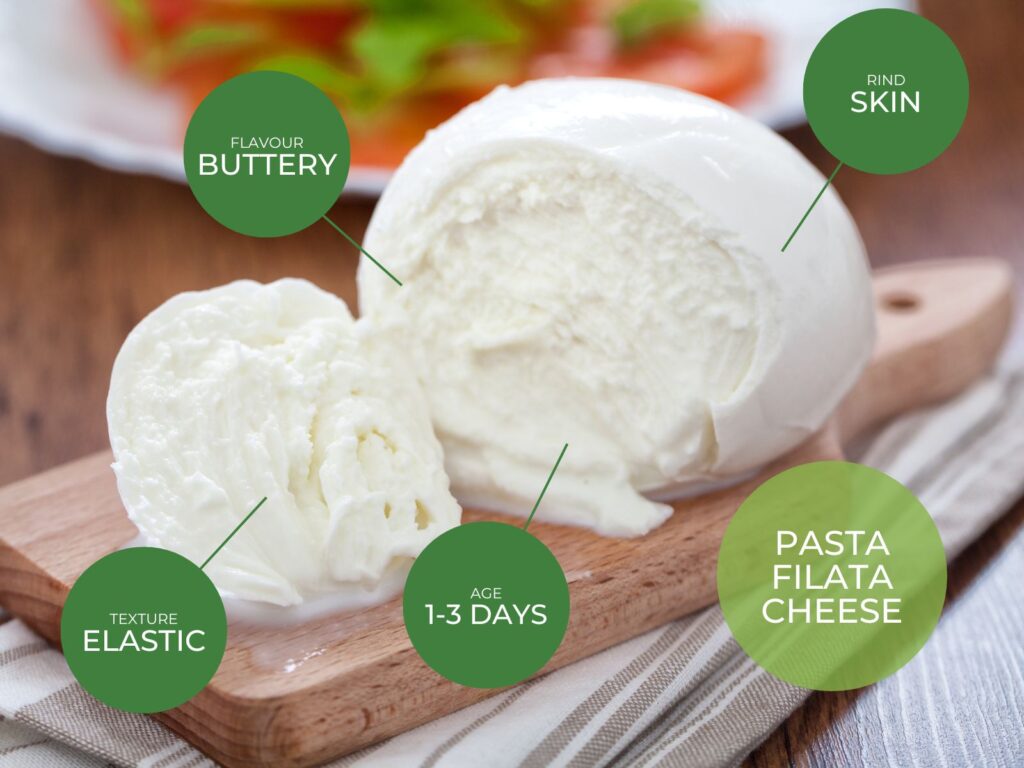
Our final cheese type finds its root in Italy. Pasta filata is an Italian term that translates to stretched curd. And, it means just that.
Indeed, the curds are warmed up and stretched repeatedly until the cheese becomes elastic. Overall, these cheeses tend to have a mild, milky flavour. Unsurprisingly, their high moisture content means that they melt spectacularly.
Summary
Congratulations, you’ve made it to the end! While this is not an exhaustive list, it does cover most of the cheeses that are made all around the world. A couple of other categories worthy of mention would include brined cheese (e.g., Feta and Halloumi), granular cheeses (e.g., Grana Padano and Parmigiano Reggiano) and flavoured cheese (e.g., Wensleydale and Boursin).
Now that you know all the different types of cheese, tell me. What’s your favourite? Drop me a comment below.
